For many professionals, daily reading is a mix of digesting industry news and blogs and brushing up on best practices. Each day yields a new batch of gems worth sharing with your team, from an article on why we miss creative ideas right under our nose to a post on how to hit the front page of Hacker News.
Those few share-worthy links we find daily have huge potential: the right insight at the right time can give us new ideas for a project, start a debate about the direction of a product or change company culture.
In this post, we’ll take a look at six tools that help you share relevant Internet finds with your team, helping you turn your daily reading into team discussions that could lead to your company’s next big idea.
1. Evernote Web Clipper

Evernote Web Clipper is a browser extension that lets you quickly share screenshots and annotations of web pages. It appears as a pane on the right side of your browser.
Perhaps Evernote Web Clipper’s killer feature is that it allows you to type notes and scribble directly on web pages without leaving your browser. This is especially useful for when you want to share something visual, like a webpage layout or a well-designed UI.
Use Evernote Web Clipper to:
Highlight a characteristic you like about a product
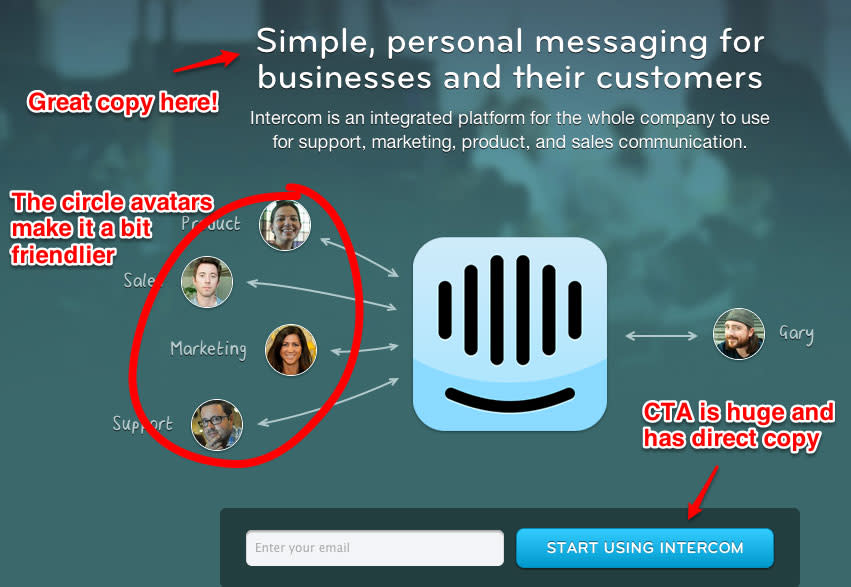
Being able to draw directly on web pages and mark it up with comments and arrows is a huge time saver.
Share feedback with your design team

Pinpoint the areas where you’d like to give feedback, making it easier for your team to understand what you’d like to change.
Collect visual references for a project

If you’re an Evernote user, you’ll love that you can sync all of your web clips to your account. This makes it easy to find old clips and share them with your team, as opposed to digging through folders or sending zip files back and forth.
Also try: Clipular, Snagit and Glui
2. iDoneThis

iDoneThis is a lightweight reporting tool that you can use to create an email digest of your team’s best discoveries.
Here’s how iDoneThis works: once per day or week (you can change the frequency), you receive an email asking you, "What'd you get done today?" You and your teammates' answers get collated into a digest email.
Here’s what Buffer’s iDoneThis digest looks like:

Use iDoneThis to:
Generate a daily email of relevant Internet finds
iDoneThis is really a reporting tool, but it’s flexible enough that you can use it as a way to collect and share the great stuff you find every day. Instead of replying with what you got done, reply with a summary of your best discoveries and iDoneThis will compile it for you.
Imagine regularly getting a list of relevant links curated by your co-workers. With a weekly digest of the top learnings from your team, it’s a lot easier to spark new ideas.
Also try: Linkydink and Weekdone
3. Trello
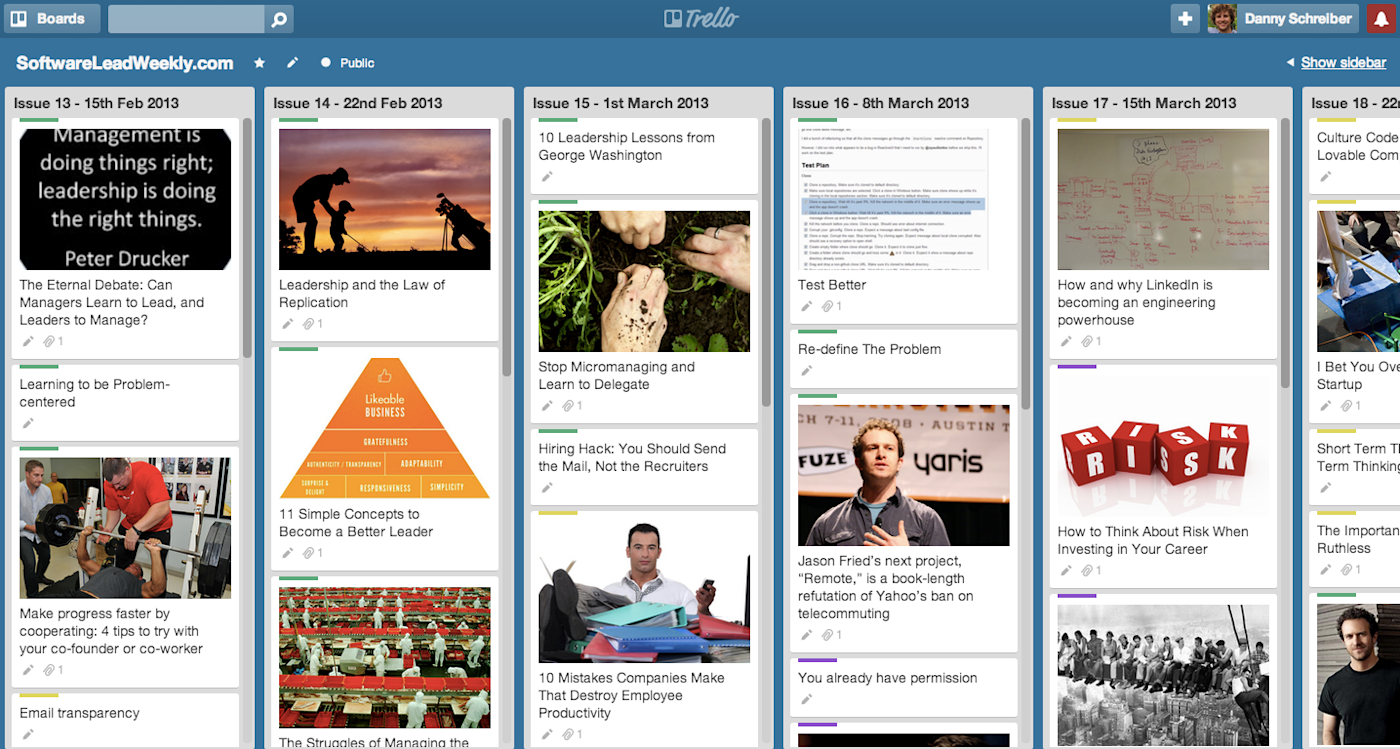
Trello is a free project management tool based on the concept of Kanban: a board with lists and cards that can be moved around.
Like iDoneThis, Trello works on a simple concept that can be used in a variety of ways. The list-and-card system is a great way to effortlessly surface ideas, resources or projects that would normally be hidden.
Use Trello to:
Keep track of all of your team’s ideas
Trello allows you to make as many cards as you’d like within a list, so you’re able to record all of your team’s ideas within a certain topic.
Create a "greatest hits" board of your best ideas around a topic

Though Trello looks like a simple app, it has a robust feature set that adds to its versatility. Every card you see above is really a mini-discussion board where tasks can be assigned, which makes it great for instantly turning an idea into a to-do list.
Also try: Wunderlist, LeanKit and Kanban Tool
4. Pie
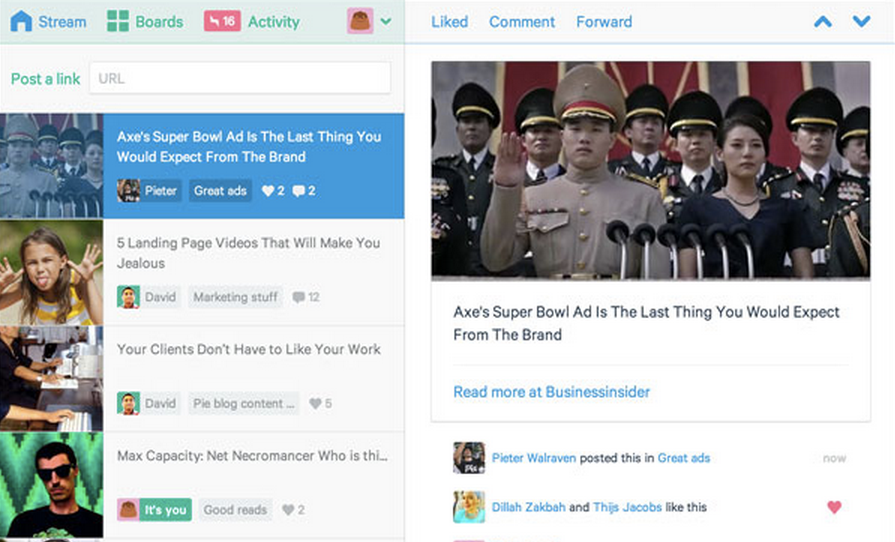
Pie is a web app where you can collect and discuss links with colleagues. (Disclosure: I’m part of the Pie team.) The app gives your team one central place to bookmark content for work. Over time, you end up building a library of your team’s knowledge, as both the links and all your team’s discussions are saved in Pie.
As a result, your team builds an awareness of what everyone else is working on, potentially making every single member of your team a source for new ideas and insights.
Use Pie to:
Discuss industry news and articles

Every post has a comments section, so your team can have focused conversations about the content.
Use shared boards to collect ideas with your team
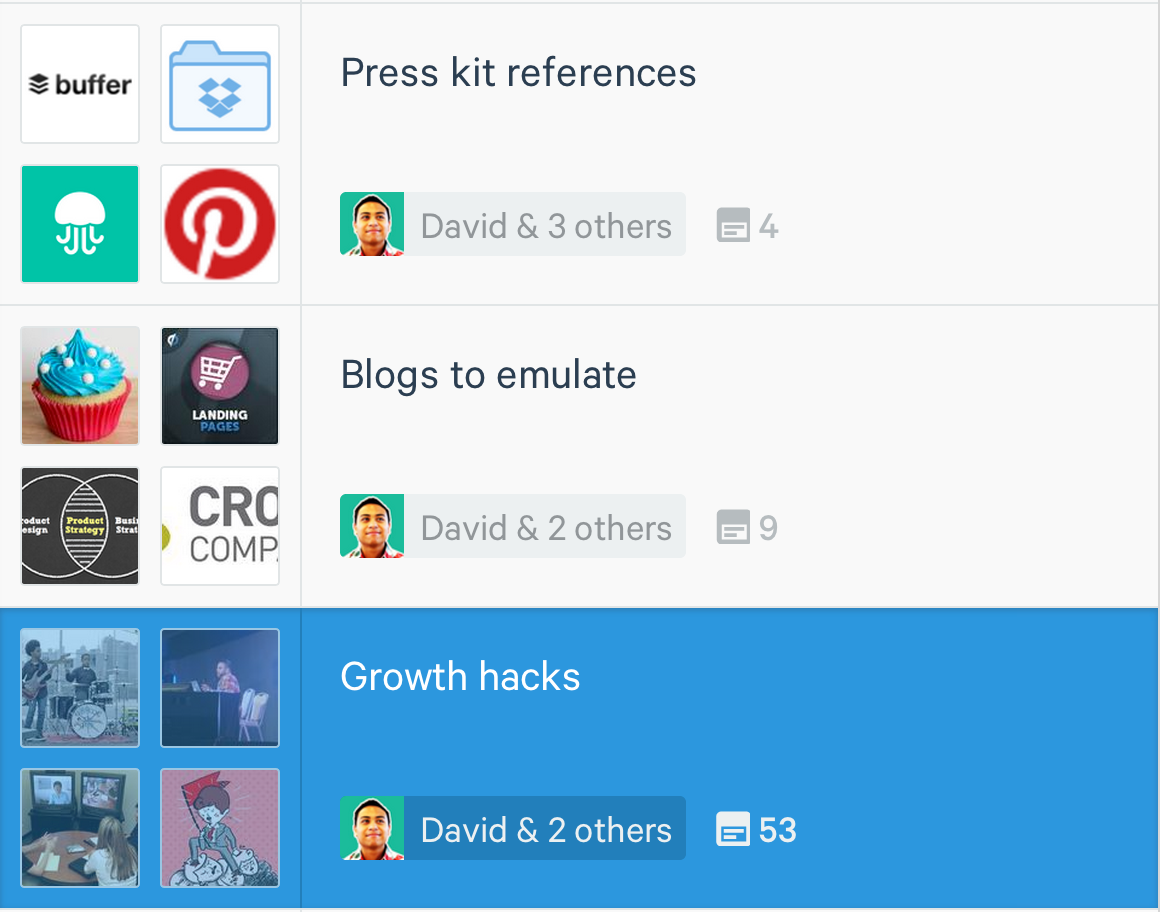
You use boards to organize content in Pie. For example, the marketing team can compile a library of growth hacks and account managers can share boards with clients to build a collection of project references.
Pie is free for teams of all sizes, so you’ll be able to invite everyone on your team.
5. Slack

Quickly huddle over an idea with Slack, a group chat and collaboration app.
Slack is perfect for when you need to collaborate with teammates together to bring an idea into the world. What makes Slack stand out from other team chat apps are its integrations and deep search capabilities. You can do things like create Asana tasks from within a channel—like Trello, you can immediately turn brainstorming sessions into actionable plans and next steps. When you drag-and-drop Google Docs into Slack, its contents become searchable from the app, so it’s easy to find what you need.
Use Slack to:
Give every team a place to share ideas
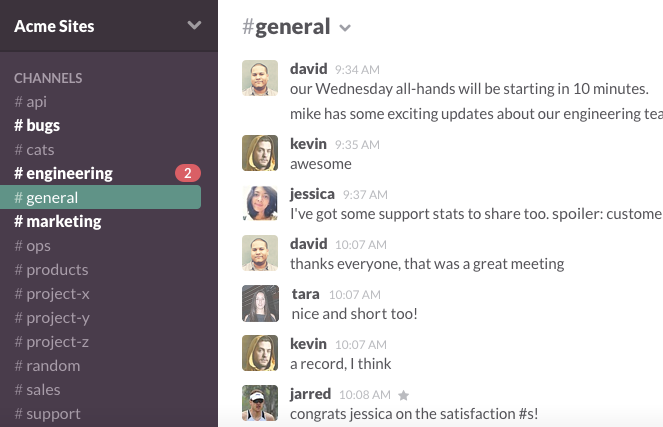
Set up new channels in Slack to keep discussions relevant and on-topic. It’s also an easy way to keep files for projects in one place. Slack offers thoughtful touches for team conversations, too. For example, when images are dropped in Slack, comments for that image are kept inline so it archives the discussion around that image in one spot.
Find everything you’ve discussed for a project

When you hook up Slack to the services your team uses, it can help you find those long-lost documents and files. Search helps you stay in flow when doing a brainstorm meeting—no more awkward moments where everyone waits for you to leaf through your email to find an attachment.
Also try: HipChat, Campfire, Kato and Hall
6. P2 WordPress Theme
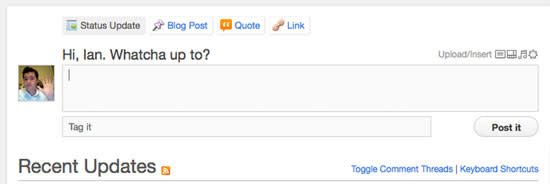
P2 is a low-friction, freeform place to share links, status updates and ideas.
The WordPress theme offers a lightweight intranet that resembles Twitter, so your team will immediately understand how it works. With its basic feature set and familiar interface, it’s a low-barrier way to get your team to start sharing the best of their daily reads and getting everyone talking.
Also try: Honey, Yammer and Redbooth
Work Smarter Together
When your teammates have a way to surface their best Internet discoveries, everyone benefits. People get exposed to a wider scope of information than they normally would seen, which can start new discussions that could lead to big ideas. It allows everyone on your team to tap into each other’s collective knowledge.
What tools does your team use to share their daily internet discoveries?
Credits: Reading photo courtesy Gary Knight




